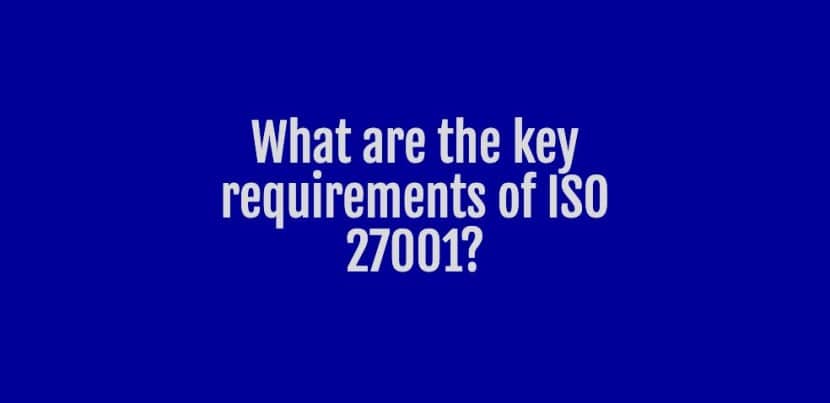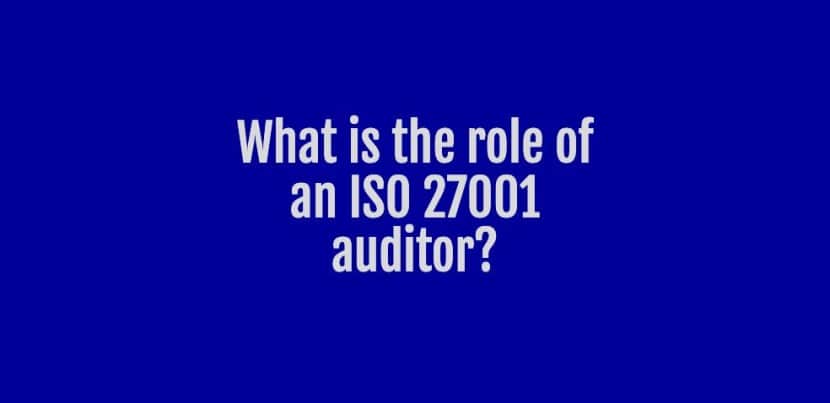The key requirements of ISO 27001, which is the international standard for information security management systems, can be summarized as follows:
1. Leadership and commitment: Top management must demonstrate their commitment to establishing, implementing, and continually improving information security within the organization.
2. Context of the organization: The organization should determine its internal and external context, identify interested parties, and define the scope of the information security management system (ISMS).
3. Risk assessment and management: Systematic assessment of information security risks should be conducted to identify threats, vulnerabilities, and potential impacts. Appropriate risk treatments should be implemented to manage and reduce these risks.
4. Information security policy: The organization should establish an information security policy that provides a framework for setting information security objectives and managing risks.
5. Organizational roles and responsibilities: Clear roles and responsibilities for information security management should be defined and communicated throughout the organization.
6. Staff awareness and competence: Adequate training, communication, and awareness programs should be provided to ensure that staff members have the necessary skills and knowledge to fulfill their information security responsibilities.
7. Asset management: An inventory of information assets should be maintained, and appropriate protection measures should be implemented to ensure their confidentiality, integrity, and availability.
8. Access control: Access to information and information processing facilities should be controlled based on business and security requirements.
9. Cryptography: Where required, cryptographic controls should be implemented to protect the confidentiality, integrity, and authenticity of information.
10. Physical and environmental security: Measures should be implemented to prevent unauthorized access, damage, and interference to information and information processing facilities.
11. Operations security: Effective policies and procedures should be in place to ensure the secure management of operational processes and the protection of information during such activities.
12. Communications security: Adequate controls should be implemented to protect the security of information exchanged within the organization and with external parties.
13. Incident management: A formal incident management process should be established to respond to and manage information security incidents, including reporting, investigation, and resolution.
14. Business continuity management: Plans and procedures should be developed to ensure the continuity of critical business functions in the event of disruptions or disasters.
15. Compliance: The organization should establish and maintain a compliance framework to meet legal, regulatory, contractual, and other applicable requirements relating to information security.
16. Internal audit: Regular internal audits should be conducted to assess the effectiveness of the ISMS and identify areas for improvement.
17. Management review: Periodic management reviews should be conducted to evaluate the performance of the ISMS, ensure its continuing suitability, adequacy, and effectiveness, and drive continual improvement.
These are some of the key requirements outlined in ISO 27001. Additionally, the standard provides guidance on how to implement and maintain an effective information security management system.
How can an organization prepare for ISO 27001 certification?
Preparing for ISO 27001 certification requires a systematic and thorough approach. Here is a step-by-step guide on how an organization can prepare for ISO 27001 certification:
1. Establish Management Support: Top management must fully commit to implementing and maintaining an Information Security Management System (ISMS) based on ISO 27001. They should allocate necessary resources, define roles and responsibilities, and promote a culture of information security.
2. Formulate a Project Team: Appoint a dedicated project manager and assemble a cross-functional team responsible for implementing the ISMS. This team should include representatives from various departments, such as IT, HR, legal, and operations.
3. Define the Scope: Determine the boundaries and extent of the ISMS. Identify the assets, systems, processes, and information that will be covered by the certification, ensuring it aligns with the organization’s objectives.
4. Conduct a Risk Assessment: Perform a comprehensive risk assessment to identify potential security threats, vulnerabilities, and impacts on the organization’s information assets. This assessment will help prioritize efforts and guide the development of a risk treatment plan.
5. Develop Information Security Policies: Design and implement a set of policies that outline the organization’s approach to information security. These policies should cover areas such as asset management, access control, incident response, and business continuity, among others.
6. Implement Controls: Select and implement appropriate controls from Annex A of the ISO 27001 standard. These controls address various aspects of information security like physical security, system development, cryptography, and human resources. The selected controls should be suitable for managing identified risks.
7. Establish Procedures and Guidelines: Define procedures, guidelines, and instructions to support the implementation of controls. These should provide specific directions for employees and stakeholders to follow when dealing with different information security aspects.
8. Raise Awareness and Provide Training: Conduct training and awareness programs to educate employees on information security principles, policies, and procedures. These programs should cover topics such as data protection, password hygiene, phishing awareness, and incident reporting.
9. Perform Internal Audits: Conduct regular internal audits to gauge the effectiveness and compliance of the implemented ISMS. These audits should be conducted by trained personnel who are independent of the areas being audited.
10. Corrective Actions and Continual Improvement: Address any non-compliance or deficiencies identified during the internal audits by implementing corrective actions. Continuously monitor and improve the ISMS based on lessons learned, feedback, and emerging threats.
11. Stage 1 and Stage 2 Audits: Engage a certified external auditor to conduct a stage 1 audit, which verifies the organization’s readiness for the ISO 27001 certification. Once stage 1 is successfully completed, proceed to the stage 2 audit, where the auditor evaluates the ISMS implementation and compliance against ISO 27001 requirements.
12. Certification Decision: After the successful completion of the stage 2 audit, the auditor will review the findings and make a recommendation for certification. If the recommendation is positive, the organization can obtain the ISO 27001 certification.
It is important to note that ISO 27001 certification is not a one-time achievement. The organization must maintain, review, and continually improve the ISMS to ensure ongoing compliance.









